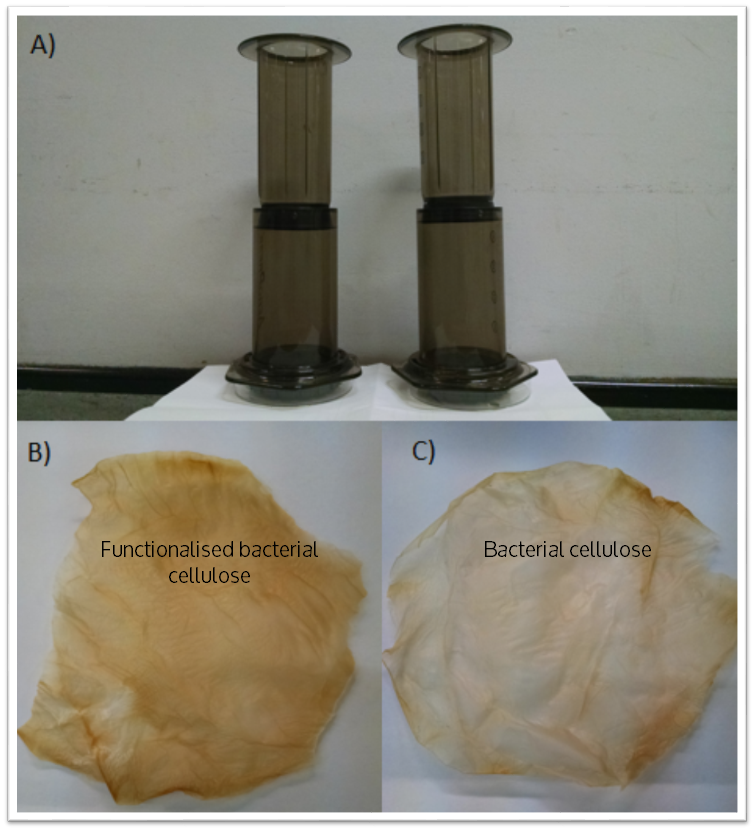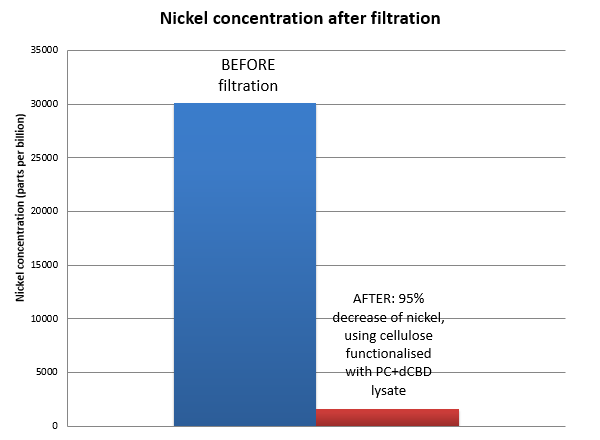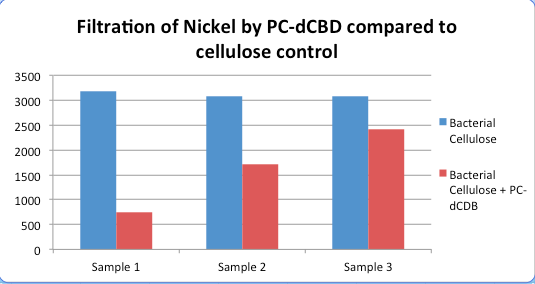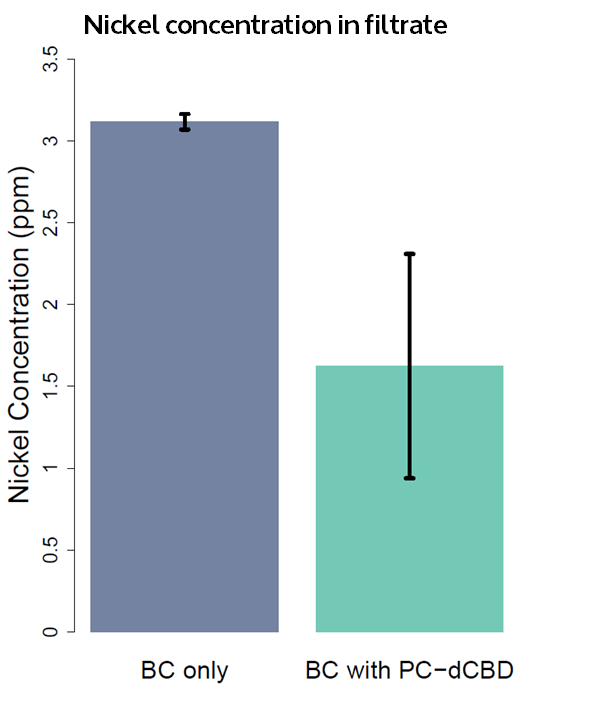Part:BBa_K1321090
Phytochelatin (PC) EC20 + Linker-dCBD
Phytochelatin metal binding peptide fused N-terminally to dCBD, which contains an endogenous N-terminal linker sequence.
This construct is part of a library of fusions with cellulose binding domains which we designed to bind to cellulose and enable capture of heavy metals ([http://2014.igem.org/Team:Imperial/Functionalisation project page]). Other fusion parts with this metal binding protein can be seen in the table below: 
Note that the start and stop codon, plus 6 bp either side of the sequence, are included the RFC25 prefix and suffix which is not shown.
For reference the cellulose binding domain binding capability to bacterial cellulose was measured relative to other cellulose binding domains when fused to sfGFP, the data for which can be seen here (here) - K1321348.
As a measure of the metal binding ability of Phytochelatin-dCBD attached onto bacterial cellulose, a filtration setup was developed and tested as displayed in the figure below. The setup includes a coffee press with a bacterial cellulose filter contained at the bottom supported by a 0.5 mm porous structure. A 50 mm diameter bacterial cellulose pellicle in the shape of a circle was used as the filtration membrane. Both pellicles were produced by ATCC 53582.

Cell lysate was prepared by inoculating a single colony of Phytochelatin-dCBD in 10 ml of standard LB media overnight under standard conditions of 37 C 180 rpm shaking. This pre-culture was used for a 1000 ml grow up of LB media, which was incubated overnight under the same conditions. This media was spun down in a centrifuge pot, sonicated and resuspended in 5 ml of PBS solution. The cell lysate was applied on to pasteurised bacterial cellulose with a spreader and dried at room temperature. For the control, a pellicle without any cell lysate applied was used.
Results were obtained as shown in the figures below:  File:Nickel filtered cellulose vs functionalised.png
File:Nickel filtered cellulose vs functionalised.png

The filtering can be summarised as shown in the figure below, showing better Nickel binding abilities of the functionalised cellulose in comparison to the control.
Sequence and Features
- 10COMPATIBLE WITH RFC[10]
- 12COMPATIBLE WITH RFC[12]
- 21COMPATIBLE WITH RFC[21]
- 23COMPATIBLE WITH RFC[23]
- 25COMPATIBLE WITH RFC[25]
- 1000COMPATIBLE WITH RFC[1000]
| None |


